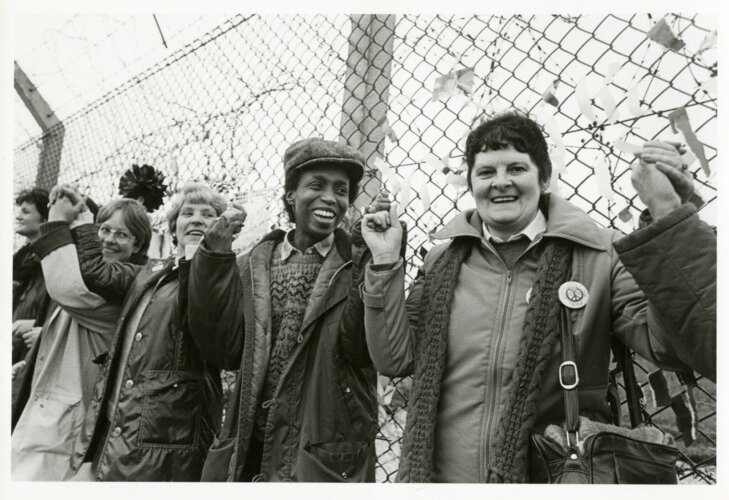The 80s: Photographing Britain at Tate Britain
Class, style, protest and photography are all part of Tate Britain’s new exhibition, The 80s: Photographing Britain.
Now open, the exhibition hosts nearly 350 images and archive materials in the largest exhibition to survey photography’s development in the UK in the 1980s to date.
Images of the miners’ strikes by John Harris and Brenda Prince, anti-racism demonstrations in Lewisham by Syd Shelton and Paul Trevor, shots of Greenham Common by Format Photographers and projects responding to the conflict in Northern Ireland by Willie Doherty and Paul Seawright, chart Thatcher’s Britain through documentary photography.

The 80s: Photographing Britain will feature images taken across the UK, from John Davies’ post-industrial Welsh landscape to Tish Murtha’s portraits of youth unemployment in Newcastle.
But, this exhibition does more than trace the cultural and political shift of the period.
Developments in photography itself are scrutinised, from technical advancements in colour to the impact of cultural theory by scholars like Stuart Hall and Victor Burgin, and influential publications like Ten.8 and Camerawork.

More than 70 photographers and collectives have been represented to spotlight a generation who engaged with new ideas of photographic practice.
The exhibition will spotlight artists including Roshini Kempadoo, Sutapa Biswas and Al-An deSouza who experiment with images to think about diasporic identities, and the likes of Joy Gregory and Maxine Walker who employ self-portraiture to celebrate ideas of Black beauty and femininity.
Against the backdrop of Section 28 and the AIDS epidemic, the exhibition will also spotlight photographers who asserted the visibility of the LGBTQ+ community.
Tessa Boffin subversively reimagines literary characters as lesbians, whilst Sunil Gupta’s ‘Pretended’ Family Relationships 1988, juxtaposes portraits of queer couples with the legislative wording of Section 28.

The exhibition will close with a series of works that celebrate countercultural movements throughout the 80s, such as Ingrid Pollardand Franklyn Rodgers’s energetic documentation of underground performances and club culture.
Looking towards a new generation of photographers, The 80s: Photographing Britain, will highlight the emergence of i-D magazine with the likes of Wolfgang Tillmans and Jason Evans, who pioneered a cutting-edge style of fashion photography inspired by an alternative and exciting wave of youth culture.
The 80s: Photographing Britain, will be on at Tate Britain until May 5, 2025.
Pictured top: Clifton Rise, Lewisham, London 13 August 1977. Civil liberties activist Darcus Howe addresses demonstrators from the roof of a public toilet block (Picture: Syd Shelton)
